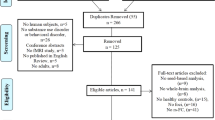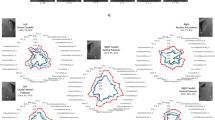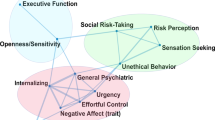Abstract
Substance use disorder (SUD) is a chronic relapsing disorder with long-lasting changes in brain intrinsic networks. While most research to date has focused on static functional connectivity, less is known about the effect of chronic drug use on dynamics of brain networks. Here we investigated brain state dynamics in individuals with opioid use (OUD) and alcohol use disorder (AUD) and assessed how concomitant nicotine use, which is frequent among individuals with OUD and AUD, affects brain dynamics. Resting-state functional magnetic resonance imaging data of 27 OUD, 107 AUD, and 137 healthy participants were included in the analyses. To identify recurrent brain states and their dynamics, we applied a data-driven clustering approach that determines brain states at a single time frame. We found that OUD and AUD non-smokers displayed similar changes in brain state dynamics including decreased fractional occupancy or dwell time in default mode network (DMN)-dominated brain states and increased appearance rate in visual network (VIS)-dominated brain states, which were also reflected in transition probabilities of related brain states. Interestingly, co-use of nicotine affected brain states in an opposite manner by lowering VIS-dominated and enhancing DMN-dominated brain states in both OUD and AUD participants. Our finding revealed a similar pattern of brain state dynamics in OUD and AUD participants that differed from controls, with an opposite effect for nicotine use suggesting distinct effects of various drugs on brain state dynamics. Different strategies for treating SUD may need to be implemented based on patterns of co-morbid drug use.
This is a preview of subscription content, access via your institution
Access options
Subscribe to this journal
Receive 13 print issues and online access
$259.00 per year
only $19.92 per issue
Buy this article
- Purchase on Springer Link
- Instant access to full article PDF
Prices may be subject to local taxes which are calculated during checkout




Similar content being viewed by others
References
Rehm J, Mathers C, Popova S, Thavorncharoensap M, Teerawattananon Y, Patra J. Global burden of disease and injury and economic cost attributable to alcohol use and alcohol-use disorders. Lancet. 2009;373:2223–33.
Degenhardt L, Whiteford HA, Ferrari AJ, Baxter AJ, Charlson FJ, Hall WD, et al. Global burden of disease attributable to illicit drug use and dependence: findings from the Global Burden of Disease Study 2010. Lancet. 2013;382:1564–74.
Degenhardt L, Grebely J, Stone J, Hickman M, Vickerman P, Marshall BDL, et al. Global patterns of opioid use and dependence: harms to populations, interventions, and future action. Lancet. 2019;394:1560–79.
U.S. Overdose Deaths In 2021 Increased Half as Much as in 2020 - But are still up 15%. 2022. https://www.cdc.gov/nchs/pressroom/nchs_press_releases/2022/202205.htm.
Centers for Disease Control and Prevention: Alcohol and public health: Alcohol-related disease impact. https://nccd.cdc.gov/DPH_ARDI/Default/Report.aspx?T=AAM&P=612EF325-9B55-442B-AE0C-789B06E3A8D5&R=C877B524-834A-47D5-964D-158FE519C894&M=DB4DAAC0-C9B3-4F92-91A5-A5781DA85B68&F=&D=.
Sha Z, Wager TD, Mechelli A, He Y. Common dysfunction of large-scale neurocognitive networks across psychiatric disorders. Biol Psychiatry. 2019;85:379–88.
Tolomeo S, Yu R. Brain network dysfunctions in addiction: a meta-analysis of resting-state functional connectivity. Transl Psychiatry. 2022;12:1–11.
Ieong HF-H, Yuan Z. Resting-state neuroimaging and neuropsychological findings in opioid use disorder during abstinence: a review. Front Hum Neurosci. 2017;11:169.
Zhang R, Volkow ND. Brain default-mode network dysfunction in addiction. NeuroImage. 2019;200:313–31.
Hutchison RM, Womelsdorf T, Allen EA, Bandettini PA, Calhoun VD, Corbetta M, et al. Dynamic functional connectivity: promise, issues, and interpretations. Neuroimage. 2013;80:360–78.
Yang Z, Wen M, Wei Y, Huang H, Zheng R, Wang W, et al. Alternations in dynamic and static functional connectivity density in chronic smokers. Front Psychiatry. 2022;13:843254.
Zhai T, Gu H, Salmeron BJ, Stein EA, Yang Y. Disrupted dynamic interactions between large-scale brain networks in cocaine users are associated with dependence severity. biological psychiatry: cognitive neuroscience and neuroimaging. 2022. 2022. https://doi.org/10.1016/j.bpsc.2022.08.010.
Vergara VM, Weiland BJ, Hutchison KE, Calhoun VD. The impact of combinations of alcohol, nicotine, and cannabis on dynamic brain connectivity. Neuropsychopharmacology 2018;43:877–90.
Cornblath EJ, Ashourvan A, Kim JZ, Betzel RF, Ciric R, Adebimpe A, et al. Temporal sequences of brain activity at rest are constrained by white matter structure and modulated by cognitive demands. Commun Biol. 2020;3:1–12.
Arbanas G. Diagnostic and statistical manual of mental disorders (DSM-5). Alcohol Psychiatry Res; Zagreb. 2015;51:61–64.
Segal DL. Diagnostic and statistical manual of mental disorders (DSM-IV-TR). The Corsini encyclopedia of psychology, American Cancer Society; 2010. p. 1–3.
Sobell L, Sobell M. Timeline followback user’s guide: a calendar method for assessing alcohol and drug use. Toronto, Ontario, Canada: Addiction Research Foundation Addiction Research Foundation. 1996;1996.
Saunders JB, Aasland OG, Babor TF, Fuente JRDL, Grant M. Development of the alcohol use disorders identification test (AUDIT): WHO Collaborative Project on early detection of persons with harmful alcohol consumption-II. Addiction 1993;88:791–804.
Heatherton TF, Kozlowski LT, Frecker RC, Fagerström KO. The Fagerström Test for Nicotine Dependence: a revision of the Fagerström Tolerance Questionnaire. Br J Addict. 1991;86:1119–27.
Whitfield-Gabrieli S, Nieto-Castanon A. Conn: a functional connectivity toolbox for correlated and anticorrelated brain networks. Brain Connect. 2012;2:125–41.
Schaefer A, Kong R, Gordon EM, Laumann TO, Zuo X-N, Holmes AJ, et al. Local-global parcellation of the human cerebral cortex from intrinsic functional connectivity MRI. Cereb Cortex. 2018;28:3095–114.
Singleton SP, Luppi AI, Carhart-Harris RL, Cruzat J, Roseman L, Nutt DJ, et al. Receptor-informed network control theory links LSD and psilocybin to a flattening of the brain’s control energy landscape. Nat Commun. 2022;13:5812.
Yeo BTT, Krienen FM, Sepulcre J, Sabuncu MR, Lashkari D, Hollinshead M, et al. The organization of the human cerebral cortex estimated by intrinsic functional connectivity. J Neurophysiol. 2011;106:1125–65.
Olafson E, Russello G, Jamison KW, Liu H, Wang D, Bruss JE, et al. Frontoparietal network activation is associated with motor recovery in ischemic stroke patients. Commun Biol. 2022;5:1–11.
Cheng W, Rolls ET, Robbins TW, Gong W, Liu Z, Lv W, et al. Decreased brain connectivity in smoking contrasts with increased connectivity in drinking. Elife. 2019;8:e40765.
King A, McNamara P, Angstadt M, Phan KL. Neural substrates of alcohol-induced smoking urge in heavy drinking nondaily smokers. Neuropsychopharmacology. 2010;35:692–701.
Thakrar AP, Pytell JD, Stoller KB, Walters V, Weiss RD, Chander G. Transitioning off methadone: a qualitative study exploring why patients discontinue methadone treatment for opioid use disorder. J Subst Use Addict Treat. 2023;150:209055.
Lin F, Wu G, Zhu L, Lei H. Altered brain functional networks in heavy smokers. Addic Biol. 2015;20:809–19.
Xue Y, Zhou H, Jiang C, Liu X, Zhou Z, Wang J. Two-hour tobacco abstinence has no effect on cognitive control in male patients with nicotine dependence: an ERP study. Front Psychiatry. 2020;11:604684.
Volkow ND, Koob GF, McLellan AT. Neurobiologic advances from the brain disease model of addiction. N Engl J Med. 2016;374:363–71.
Wang KS, Brown K, Frederick BB, Moran LV, Olson D, Pizzagalli DA, et al. Nicotine acutely alters temporal properties of resting brain states. Drug Alcohol Depend. 2021;226:108846.
Schlemm E, Frey BM, Mayer C, Petersen M, Fiehler J, Hanning U, et al. Equalization of brain state occupancy accompanies cognitive impairment in cerebral small vessel disease. Biol Psychiatry. 2022;92:592–602.
Sun Y, Wang G-B, Lin Q-X, Lu L, Shu N, Meng S-Q, et al. Disrupted white matter structural connectivity in heroin abusers. Addict Biol. 2017;22:184–95.
Chumin EJ, Grecco GG, Dzemidzic M, Cheng H, Finn P, Sporns O, et al. Alterations in white matter microstructure and connectivity in young adults with alcohol use disorder. Alcohol Clin Exp Res. 2019;43:1170–9.
Muller AM, Pennington DL, Meyerhoff DJ. Substance-specific and shared gray matter signatures in alcohol, opioid, and polysubstance use disorder. Front Psychiatry. 2022;12:795299.
Jing R, Lin X, Ding Z, Chang S, Shi L, Liu L, et al. Heterogeneous brain dynamic functional connectivity patterns in first-episode drug-naive patients with major depressive disorder. Hum Brain Mapp. 2023;44:3112–22.
Braun U, Harneit A, Pergola G, Menara T, Schäfer A, Betzel RF, et al. Brain network dynamics during working memory are modulated by dopamine and diminished in schizophrenia. Nat Commun. 2021;12:3478.
Koob GF, Volkow ND. Neurobiology of addiction: a neurocircuitry analysis. Lancet Psychiatry. 2016;3:760–73.
Herz A. Endogenous opioid systems and alcohol addiction. Psychopharmacology. 1997;129:99–111.
Xu KY, Presnall N, Mintz CM, Borodovsky JT, Bhat NR, Bierut LJ, et al. Association of opioid use disorder treatment with alcohol-related acute events. JAMA Netw Open. 2021;4:e210061.
Custodio L, Malone S, Bardo MT, Turner JR. Nicotine and opioid co-dependence: findings from bench research to clinical trials. Neurosci Biobehav Rev. 2022;134:104507.
Kamens HM, Flarend G, Horton WJ. The role of nicotinic receptors in alcohol consumption. Pharm Res. 2023;190:106705.
Wise T, Marwood L, Perkins AM, Herane-Vives A, Joules R, Lythgoe DJ, et al. Instability of default mode network connectivity in major depression: a two-sample confirmation study. Transl Psychiatry. 2017;7:e1105.
Lim J, Teng J, Patanaik A, Tandi J, Massar SAA. Dynamic functional connectivity markers of objective trait mindfulness. Neuroimage. 2018;176:193–202.
Mooneyham BW, Mrazek MD, Mrazek AJ, Mrazek KL, Phillips DT, Schooler JW. States of mind: characterizing the neural bases of focus and mind-wandering through dynamic functional connectivity. J Cogn Neurosci. 2017;29:495–506.
Acknowledgements
We thank Michele Vera-Yonga, Veronica Ramirez, Jamie Burns, Christopher Kure Liu, Dani Kroll, Dana Feldman, Karen Torres, Christopher Wong, Amna Zehra, Lori Talagala, Myke Vandine and Minoo McFarland for their contributions.
Funding
This work was accomplished with support from the National Institute on Alcohol Abuse and Alcoholism (ZIAAA000550, PI: NDV and ZIAAA000125, PI: RM), the Division of Intramural Clinical and Biological Research, NIAAA, including the 1SE Inpatient Behavioral Health Unit and the 1SE Outpatient Clinic.
Author information
Authors and Affiliations
Contributions
RZ and NDV designed the research; RZ and WY analyzed the data; RZ and NDV interpreted the data; RZ, WY, ESK, PM, SBD, MS, LV, DS, DT, NG, GJW, ND, RM performed the research; RZ wrote the first draft. All authors revised and approved the final version.
Corresponding authors
Ethics declarations
Competing interests
The authors declare no competing interests.
Additional information
Publisher’s note Springer Nature remains neutral with regard to jurisdictional claims in published maps and institutional affiliations.
Supplementary information
Rights and permissions
About this article
Cite this article
Zhang, R., Yan, W., Manza, P. et al. Disrupted brain state dynamics in opioid and alcohol use disorder: attenuation by nicotine use. Neuropsychopharmacol. 49, 876–884 (2024). https://doi.org/10.1038/s41386-023-01750-w
Received:
Revised:
Accepted:
Published:
Issue Date:
DOI: https://doi.org/10.1038/s41386-023-01750-w



